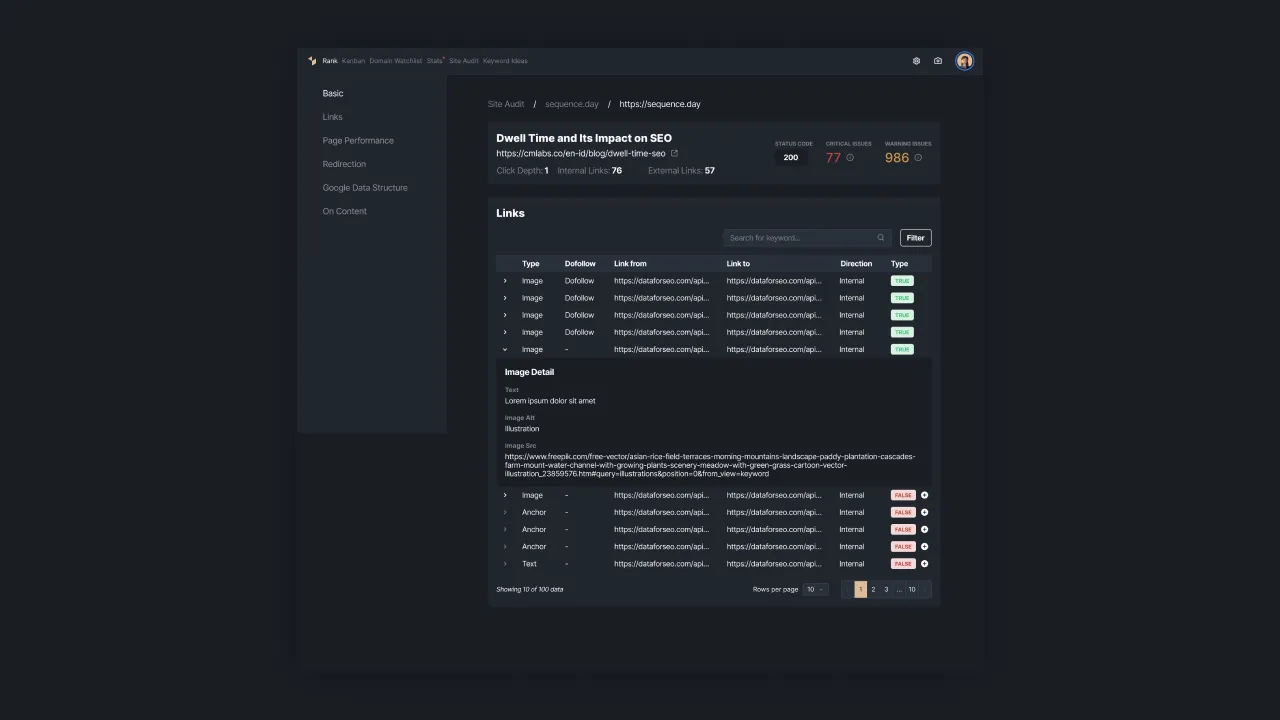What Is Nofollow and Dofollow Link in SEO?
Links play a pivotal role in search engine optimization (SEO) and are considered one of the key factors that search engines use to evaluate and rank websites.
There are two primary types of links - nofollow and dofollow. Understanding the difference between these two link types is crucial for effectively leveraging them to boost your website's search engine rankings.
In this article, you will learn each term and dive deeper into how those links can be used in SEO.
What Are Links in SEO?
In SEO, "links" generally refer to hyperlinks that connect one webpage to another. These links come in various forms and serve multiple purposes. The two fundamental types of links are:
- Internal Links: These are links that connect pages within the same website. They aid in navigation, guide users to relevant content, and help search engines understand the structure and hierarchy of your site.
- External Links: Also known as outbound links, these connect your website to other external websites. They can be valuable for referencing sources, citing authorities, and offering additional information to your audience.
What Is Nofollow Links?
Nofollow links are HTML attributes that can be added to a hyperlink. These attributes tell search engines not to follow the link to the target page or to consider it while calculating page rank. The primary characteristics of nofollow links include:
- Purpose: They are often used to indicate that the linked content is unendorsed or unrelated to the current page, such as comments on a blog or user-generated content where you don't want to pass on SEO authority to the linked site.
- Impact on SEO: Nofollow links don't directly contribute to improving a webpage's search engine ranking. However, they can still drive traffic, especially if they are from reputable sources, and they are essential for maintaining a natural link profile.
- HTML Implementation: To create a nofollow link, you simply add the "rel=nofollow" attribute to the hyperlink in the HTML code. For example: Visit Example.
What Is a Dofollow Link?
Dofollow links, on the other hand, are the default type of links in HTML, and they allow search engines to follow the link and consider it for page rank calculations. Key characteristics of dofollow links include:
- Purpose: Dofollow links are the standard links you use when you want to pass SEO value and authority from your page to the linked page. They are common in articles, blog posts, and other forms of content.
- Impact on SEO: Dofollow links can significantly impact your SEO. They can help improve the search engine rankings of the linked page, contribute to your website's authority, and enhance your overall visibility in search results.
- HTML Implementation: Dofollow links do not require any special HTML attributes. By default, all links are considered dofollow unless you explicitly add the "rel=nofollow" attribute to them.
When Should Use Nofollow and Dofollow?
The decision to use nofollow or dofollow links in your content and website structure depends on your SEO goals and the context in which the links are being used. Here are some guidelines on when to use each type of link:
When to Use Nofollow Links?
There are some circumstances where you need to srt nofollow for your link, here are the circumstances:
- User-Generated Content: When you have user-generated content on your website, such as comments on blog posts or forum threads, it's a good practice to use nofollow links for any links within those comments. This prevents you from inadvertently passing SEO authority to potentially low-quality or spammy websites.
- Paid Links: If you're engaging in paid link placements or sponsored content, it's important to use nofollow attributes for those links to comply with search engine guidelines. Search engines want to ensure that paid links don't manipulate search results, so adding nofollow attributes is a best practice.
- Affiliate Links: If your website includes affiliate marketing links, it's generally recommended to use nofollow attributes for those links. This is especially important if the primary purpose of the link is to earn a commission.
When to Use Dofollow Links?
Besides using nofollow, there might be a time you need to set dofollow. Below are the types of content you should set as dofollow links:
- Internal Links: Internal links within your website, such as navigation links or links between related articles, should typically be dofollow. They help search engines understand your site's structure and content hierarchy.
- Editorial Links: In your original content, such as blog posts, articles, and reports, you should use dofollow links when you are genuinely referencing or citing sources that add value to your content. Editorial links pass on authority and signal that you are supporting your claims with reputable sources.
- Content Promotion: When you are promoting your own content, products, or services, or those of a trusted partner, you can use dofollow links. This helps in passing SEO value and directing users to relevant pages.
- Natural Citations: If another website naturally cites or references your content, it's a good opportunity for a dofollow link. This can enhance your website's authority and contribute to your SEO efforts.
You also can conduct a site auditto see if there is any issue with your nofollow or dofollow links. This way, you can get a better understanding of your optimization strategy. Use Sequence Stats to schedule a site audit where you can get the result automatically.
 |
|---|
| Picture 1 - Site Audit link on Sequence Stats. |
Remember that the use of nofollow and dofollow links should align with both SEO best practices and search engine guidelines. Striking the right balance between these link types is essential for a well-rounded and effective SEO strategy.
Go register yourself to Sequence Statsand enjoy every feature for your SEO success! Please, have a free trial.